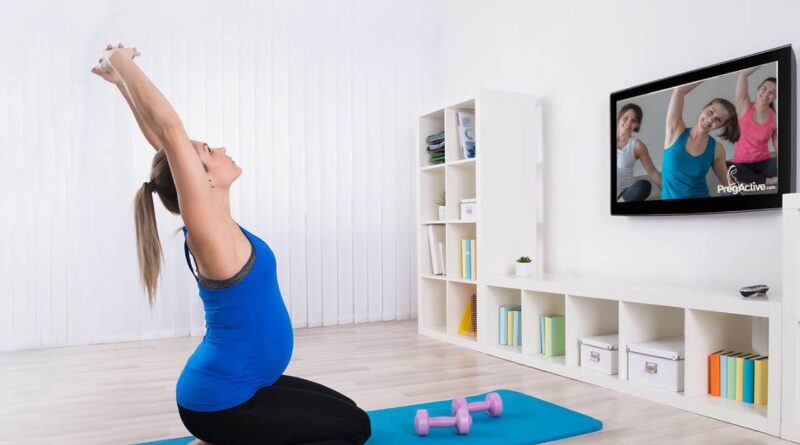Early Pregnancy Exercises at Home
Early Pregnancy Exercises at Home
During the first trimester of pregnancy, people should aim to establish good exercise habits gradually. The right amount of exercise for an individual will depend on how active they were before becoming pregnant.
It is best to favor low impact exercises — especially walking, yoga, swimming, and water aerobics during this time.
Some slightly more vigorous exercises may also be appropriate in the first trimester. Examples of these include running, jogging, and moderate weightlifting.
A person should speak with a doctor, if possible, before starting any new exercises or workout routines.
Best exercises during early pregnancy
The following exercises are recommended for people during early pregnancy:
1. Kegels
Kegel exercises, or pelvic floor exercises, work to strengthen the muscles that support the abdominal organs, including the uterus, vagina, bowel, and bladder.
These exercises also help maintain control of bladder function and can reduce the risk of hemorrhoids.
With an empty bladder, squeeze the Kegel muscles and hold the contraction for 5 to10 seconds before relaxing. Try to avoid using any surrounding muscles, such as those of the buttocks, legs, or abs.
2. Walking and jogging
Walking on a flat, even surface is one of the most gentle, low impact forms of exercise, which makes it ideal for pregnant people.
Swinging the arms in wide, rhythmic movements while walking can result in a moderate increase in heart rate. Walking in a calm, natural setting can also help promote well-being and relaxation.
A person who is unaccustomed to taking walks could begin by taking a few 10-minute walks every week. During the first trimester, people can gradually build up to taking 30-minute walks three to five times per week, if they choose.
People who are accustomed to running can gradually transition from walking to jogging during the first trimester, as long as they use a flat, even surface.
Anyone who is taking prolonged walks or jogs should be sure to wear supportive footwear that fits correctly.
3. Swimming and water aerobics
Swimming and water aerobics are low impact exercises that can help keep the body toned and do not present a risk of falling.
If a person is accustomed to swimming or doing water aerobics, their usual routine will often be safe during the first trimester of pregnancy.
If a person is new to swimming, they may want to start by taking two or three 30-minute classes each week. Once they become more confident, they could go for 30-minute sessions a few times per week or as often as feels comfortable for them.

4. Yoga
Doing yoga allows people to gently stretch and strengthen their body. It also encourages mindfulness skills that can be very helpful during labor, such as controlled breathing and meditation.
Many yoga studios offer classes for pregnant people. People who are new to yoga could try to attend one 30-minute session per week.
People who are accustomed to doing yoga can often continue with their usual routine during early pregnancy.
A person may want to ask a doctor if there are any specific movements, such as lying on the back, that they should avoid.
5. Pilates
Pilates can improve core strength and balance, which may reduce the risk of falling. It can also help ease lower back pain associated with weight gain, especially in the front of the body.
People who are new to Pilates could start gradually by doing a few sessions per week, each lasting 5 to 10 minutes. They can then work their way toward attending sessions lasting 30 to 60 minutes.
Pregnant people who are accustomed to Pilates can often maintain their usual routine during the first trimester.
Again, a person may want to ask a doctor if there are any specific movements that they should avoid.
Many studios and gyms offer prenatal Pilates classes, and similar lessons are available online.
6. Low intensity weight training
During the first trimester of pregnancy, it is generally safe to do some moderate weightlifting.
Using free weights and weight machines can help a person manage their weight and improve their overall strength. Having a stronger core can also help improve stability and reduce the risk of falling.
People should be sure to keep the fetus safe by keeping weights in a safe position. They should also consult a doctor, if possible, to find out if there are any specific movements that they should avoid.
People who are new to weightlifting should start gradually and use light free weights.
7. Spin classes or cycling with a stationary bike
Off-road cycling, such as mountain biking, is not a good option for pregnant people due to the risk of falling and injury.
Stationary bikes, spin classes, and safe, flat cycling paths are all alternatives with significantly fewer risks.
People who are new to the stationary bike could try cycling for 10–15 minutes at a time. They could then extend their sessions to 30–60 minutes, if comfortable.
If a person is used to spinning or using a stationary bike, they can often maintain their regular routine during the first trimester.
Do’s
Pregnant women should aim to do low impact, moderate intensity exercises that lead to light sweating and slight increases in heart rate.
Some tips for exercising safely during the first trimester include the following:
1. Stay hydrated.
2. Stay cool, and wear loose-fitting clothing.
3. Wear well-fitting, supportive, non-slip shoes.
4. Recognize when to exercise less often or reduce the intensity.
5. Set realistic goals and try to stick to them.
6. Remember to breathe and be aware of heart rate during workouts.
7. Whenever a person feels tired or weak, it is important for them to stop and rest.
Don’ts
To prevent complications, pregnant people should avoid:
1. high impact exercises
2. contact sports
3. exercises with a high risk of falling, such as gymnastic or aerial sports
4. high intensity exercises that raise heart and breathing rates to such an extent that it is difficult to speak
5. exercises that place jarring pressure on the pelvis and torso, such as horseback riding
6. exercises or environments that increase the risk of overheating
Stop exercising when you experience:
1. experience nausea
2. are dehydrated
3. start to overheat
4. feel dizzy or lightheaded
5. have difficulty breathing
6. have an uncomfortable or unsteady heart rate
7. have a headache
Stop exercising during pregnancy when
Is It Safe to Do Planks While Pregnant?
Although planks won’t cause danger to yourself or your baby during pregnancy, there are some types of core exercises you should avoid. While pregnant, avoid any exercises that involve: Twisting or crunching. Laying on your stomach.





